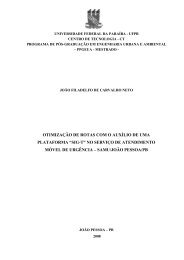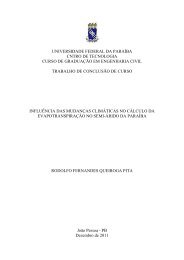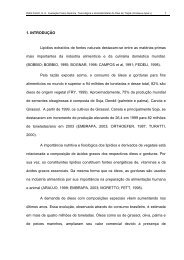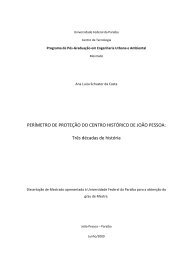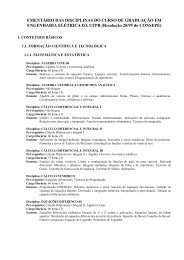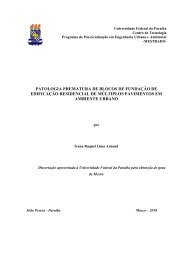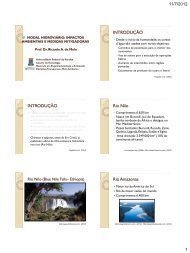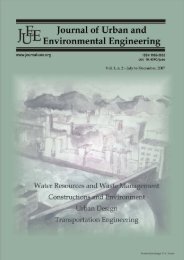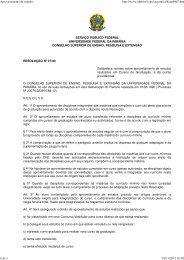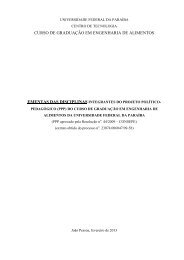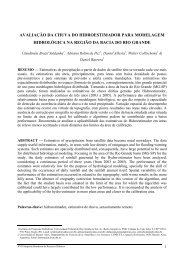editorial team
editorial team
editorial team
You also want an ePaper? Increase the reach of your titles
YUMPU automatically turns print PDFs into web optimized ePapers that Google loves.
Akpinar and Akpinar<br />
21<br />
coldest values in the Erzurum. Kars city is the most<br />
humid area almost throughout the period while Igdir<br />
is the least humid area. Wind speed reaches the<br />
highest values in the Erzurum and the lowest values<br />
in the Igdir. Pressure reaches the highest values in<br />
the Igdir and the lowest values in the Kars. Bitlis<br />
city is the most rainfall almost throughout the<br />
period while Igdir is the least rainfall area. Direct<br />
solar radiation reaches the highest values in the<br />
Tunceli and the lowest values in the Agri.<br />
Sunshine duration reaches the highest values in the<br />
Van and the lowest values in the Bitlis.<br />
(2) Regression models are presented for the weather<br />
data at the period 1994–2003 of thirteen cities in<br />
the east Anatolia region of Turkey. The best fits<br />
were for the monthly average temperature,<br />
maximum–minimum temperature, relative<br />
humidity, wind speed, solar radiation and sunshine<br />
duration. The model for the monthly average<br />
pressure and rainfall is also adequate. As seen<br />
from Figs 3, 5, 7, 9, 11, 13, 15, 17, 19, there are<br />
good agreements between predicted and observed<br />
values. In other words the new equations are able<br />
to predict effectively the monthly average<br />
variations of observed values. The three good<br />
indicators of solar and wind energy potential,<br />
temperature, maximum–minimum temperature,<br />
global radiation and sunshine hours have very high<br />
averages. These high values are maintained for a<br />
considerable part of the year. The functions<br />
presented for the parameters should enable the<br />
determination of specific parameter values and the<br />
prediction of missing values.<br />
(3) The factors thought to be effective on the climatic<br />
differences mentioned above may result from the<br />
features of the investigated cities. The factors<br />
thought to be effective on the differences<br />
determined in the present study are briefly canopy<br />
and evapotranspiration effects, elevation difference<br />
between the areas and surface roughness, radiation<br />
and reflection factors, smoke and dust, the duration<br />
and color of snow cover on the ground, wind<br />
direction and other anthropogenic effects of the<br />
investigated city. Depending on the location of the<br />
city center, prevalent easterly and northerly winds<br />
in this area is effective on temperatures and<br />
humidity, which can decrease temperatures and<br />
increase humidity. As is known, there is a true<br />
relationship between the population and<br />
temperature in a city center. This effect may be<br />
smaller compared to those aforementioned,<br />
because of the relatively low population and the<br />
city lacks of any industrial facilities that may<br />
influence the temperature in the city.<br />
This study is expected to be useful in analyzing and<br />
interpreting the environmental and energy related<br />
issues.<br />
REFERENCES<br />
Abdul-Aziz, J., Nagi, A. A. & Zumailan, A.A.R. (1993) Global solar<br />
radiation estimation from relative sunshine hours in<br />
Yemen. Renewable Energy 3(7), 645–653. doi: 10.1016/0960-<br />
1481(93)90071-N.<br />
Al-Garni, A.Z., Şahin, A.Z. & Al-Farayedhi, A. (1999) Modelling of<br />
weather characteristics and wind power in the Eastern Part of<br />
Saudi Arabia. Int. J. Energy Res. 23(8), 805–812. doi:<br />
10.1002/(SICI)1099-114X(199907).<br />
Akpinar, E.K. & Akpinar, S. (2004) An analysis of the wind Energy<br />
Potential of Elazig. Turkey. Int. J. Green Energy 1(2), 193–207.<br />
doi: 10.1081/GE-120038752.<br />
Akpinar, E.K., Akpinar, S. & Öztop, H.F. (2006) Effects of<br />
meteorological parameters on air pollutant concentrations in<br />
Elazig, Turkey. Int. J. Green Energy 3(4), 407–421. doi:<br />
10.1080/01971520600873392.<br />
Apple, L.S.C., Chow, T.T., Square, K.F.F. & Lin, J.Z. (2006)<br />
Generation of a typical meteorological year for<br />
Hong Kong. Energy Convers. Manag. 47(1), 87–96. doi:<br />
10.1016/j.enconman.2005.02.010.<br />
Bernatzky, A. (1982) The contribution of trees and green spaces to a<br />
town climate. Energy and Buildings 5(1), 1–10. doi:<br />
10.1016/0378-7788(82)90022-6.<br />
Bristow, K.L. & Campbell, G.S. (1984) On the relationship between<br />
incoming solar radiation and daily maximum and minimum<br />
temperature. Agric. Forest Meteorol. 31(2), 159–166. doi:<br />
10.1016/0168-1923(84)90017-0.<br />
Cañada, J., Pinazo, J.M. & Bosca, J.V. (1997) Analysis of weather<br />
data measured in Valencia during the years. Renewable Energy<br />
11(2), 211–222. doi: 10.1016/S0960-1481(96)00124-3.<br />
Coppolino, S. (1994) A new correlation between the clearness index<br />
and the relative sunshine hours. Renewable Energy 4(4), 417–423.<br />
doi: 10.1016/0960-1481(94)90049-3.<br />
Dorvlo, A.S.S. & Ampratwum, D.B. (1999) Technical note<br />
modelling of weather data for Oman. Renewable Energy 17(3),<br />
421–428. doi: 10.1016/S0960-1481(98)00121-9.<br />
Hansen, J.W. (1999) Stochastic daily solar irradiance for biological<br />
modeling applications. Agric. Forest Meteorol. 94(1), 53–63. doi:<br />
10.1016/S0168-1923(99)00003-9.<br />
Kasten, F. & Czeplak, G. (1980) Solar and terrestrial radiation<br />
dependent on the amount and type of cloud. Solar Energy 24(2),<br />
177–189. doi: 10.1016/0038-092X(80)90391-6.<br />
McCaskill, M.R. (1990) Prediction of solar radiation from rainday<br />
information using regionally stable coefficients. Agric. Forest<br />
Meteorol. 51(2), 247–255. doi: 10.1016/0168-1923(90)90111-I.<br />
Nowak, D.J., McHale, R.J., Ibarra, M., Crane, D., Stevens, J.C. &<br />
Luley, C. (1998) Modeling the effects of urban vegetation on air<br />
pollution. Air pollution modeling and its application, XII. New<br />
York: Plenum Pres, 399–407.<br />
Norris, D.J. (1968) Correlation of solar radiation with clouds. Solar<br />
Energy 12(1), 107–112. doi: 10.1016/0038-092X(68)90029-7.<br />
Ododo, J.C., Agbakwuru, J.A. & Ogbu, F.A. (1996) Correlation of<br />
solar radiation with cloud cover and relative sunshine duration.<br />
Energy Convers. Manag. 37(10), 1555–1559. doi: 10.1016/0196-<br />
8904(96)86837-3.<br />
Raja I.A. & Twidell, J.W. (1994) Statistical Analysis of measured<br />
Global Insolation data for Pakistan. Renewable Energy 4(3),199–<br />
216. doi: 10.1016/0960-1481(94)90005-1.<br />
Roba, S.M. (2003) Urban–suburban/rural differences over Greater<br />
Cairo. Egypt Atmosfera 16(3), 157–171.<br />
Sahin, A.D., Dincer, I. & Rosen, M.A. (2006) New spatio-temporal<br />
wind exergy maps. J. Energy Res. Techn. 128(3), 194–202. doi:<br />
10.1115/1.2213271.<br />
Journal of Urban and Environmental Engineering (JUEE), v.4, n.1, p.9-22, 2010



